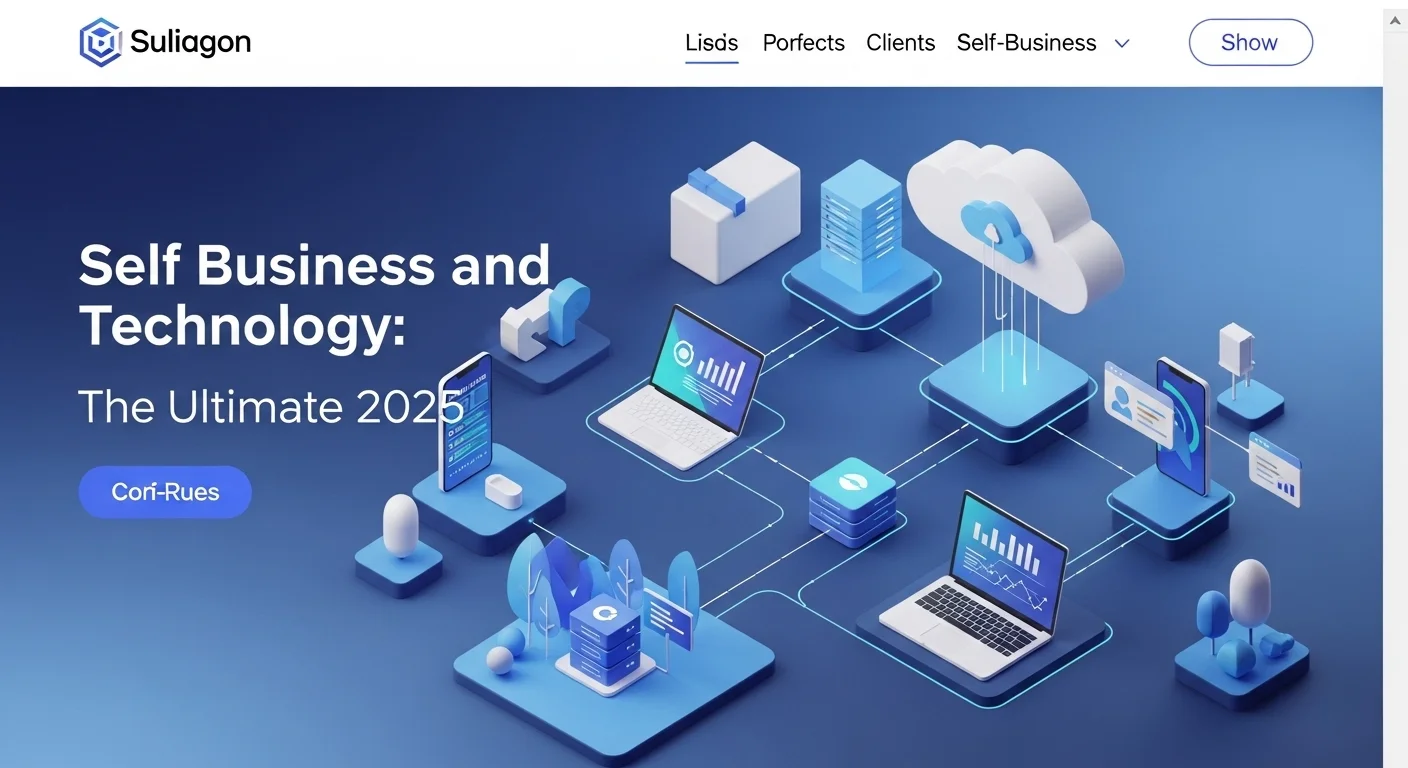From AI to IoT: A Founder's Guide to Tech Content That Converts

Executive Summary
In my years as a tech marketing strategist, I've seen countless brilliant businesses with groundbreaking products fail to connect with their audience. The problem? They speak tech, not human. This guide is my answer to that problem. It's built for the startup founder trying to make a name, the small business owner needing local clients, and the established company looking to deepen its community roots. We're going to break down how to talk about complex topics like AI, cybersecurity, and the cloud in a way that gets people excited. Forget dry, jargon-filled posts. We'll explore how to craft compelling articles, engaging videos, and shareable social media updates that don't just inform, but also build trust and drive real growth. Consider this your personal playbook for turning your expertise into your most powerful marketing tool.
Table of Contents
Table of Contents
- Why Your Tech Business Can't Survive Without Great Content
- Your Playbook for Generating Endless Tech Content Ideas
- Pro Tips to Make Your Tech Content Truly Stand Out
Why Your Tech Business Can't Survive Without Great Content
Let's be honest. In the world of technology, talking about what you do can be tough. I've been there. You're passionate about your cloud infrastructure or your machine learning algorithm, but to your customers, it can sound like a foreign language. This is where 'content ideas' become more than just a marketing buzzword—they become your translator. It's the art of taking complex, intimidating tech topics and turning them into helpful, interesting stories. For any tech company, this isn't just nice to have; it's essential for survival and growth. Think about it: when you consistently explain things clearly and solve real problems for people through your content, you're not just selling a product; you're building trust. You become the go-to expert, the first name people think of when they have a question. That's a powerful position to be in.
Beyond building trust, a steady flow of fresh content is what gets you noticed by search engines like Google. I remember working with a small cybersecurity startup that was invisible online. Their bigger competitors were spending a fortune on ads. We decided to fight smarter, not richer. We started a blog series answering the specific security questions that small business owners were typing into Google, like 'how do I protect my business from phishing scams?' Within months, their website traffic from organic search tripled. They were getting leads without spending a dime on ads. This is the magic of having a smart content plan. It levels the playing field, allowing smaller players to compete by being more helpful and relevant than anyone else.
And it's not just about marketing. Good content supports your entire business. Your sales team can use a powerful case study to close a deal by showing a potential client, 'Look, we've solved this exact problem before.' Your customer support team can direct users to a detailed tutorial video, empowering them to solve issues themselves and fostering a sense of loyalty. This is especially true if you run a service-based business, like an IT consultancy. You're not selling a box; you're selling your expertise. Your content—your articles, whitepapers, and webinars—is your digital storefront. It's how you prove you know your stuff. The most effective content strategies for service businesses focus on demonstrating deep expertise, sharing success stories, and analyzing industry trends to show they're not just keeping up, but leading the way.

Your Playbook for Generating Endless Tech Content Ideas
So, where do all these brilliant content ideas come from? It’s not magic; it’s a process. And the best way I’ve found to structure it is with a 'hub-and-spoke' model. Imagine you want to be known for 'Cloud Computing for Small Businesses.' That's your 'hub'—a massive, ultimate guide that covers the topic from A to Z. Then, you create smaller 'spoke' articles that dive into specific details, like 'Top 5 Cloud Storage Providers for 2024,' 'A Simple Guide to Cloud Security,' or 'Step-by-Step: Migrating Your Files to the Cloud.' Each of these spokes links back to your main hub. This approach is fantastic because it shows Google you're a true authority on the subject and makes it easy for your readers to find everything they need in one place.
To fuel this model, you need a mix of detective work and creativity. The first tool in your belt should be keyword research. I personally love using tools like Ahrefs or SEMrush, but even Google’s free Keyword Planner is a great start. They show you exactly what your potential customers are searching for. Seeing a query like 'is AI marketing expensive' is a direct signal to write an article titled 'Affordable AI Tools That Will Transform Your Marketing.' Next, become a spy. Look at what your competitors are writing about. What’s getting a lot of shares and comments? Your goal isn’t to copy them, but to find a gap. Can you write something more in-depth? Offer a different perspective? Create a helpful video on a topic they only covered in text? Finally, listen to people online. Spend time on platforms like LinkedIn, Reddit, or Quora. The questions people are asking in tech forums are pure gold for content ideas that address real, immediate needs.
Once you have a list of ideas, think about the best format for each one. Not everyone wants to read a 3,000-word article. Some people prefer watching a video or listening to a podcast during their commute. For a service business, nothing beats a solid case study. Tell the story: 'Here was the client's problem, here is the clever solution we designed, and here are the amazing results.' It's proof, not just promises. Video is king right now—think tutorials, product demos, or interviews with experts. A home automation company could create a whole series of 'Quick Smart Home Setups' that are both useful and great for showing off their products. The key is to have a mix. A healthy content strategy includes long articles for SEO, case studies for building credibility, and videos for engagement. This ensures you're meeting your audience wherever they are and in the format they prefer.

Pro Tips to Make Your Tech Content Truly Stand Out
Creating good content is one thing, but creating content that people remember and share requires going the extra mile. My number one rule is an unwavering commitment to accuracy. In tech, your credibility is everything. One technical error can shatter the trust you've worked so hard to build. So, research everything meticulously, fact-check your sources, and if you're writing about something outside your core expertise, have an expert review it. When you have to explain something complex, use analogies. I once explained blockchain to a client by comparing it to a shared, unchangeable Google Doc. It clicked instantly. Simple analogies and clear visuals can make all the difference in helping people grasp difficult concepts.
Your audience is your greatest resource for new ideas, so build a feedback loop. End your blog posts with a question to encourage comments. Run polls on Twitter asking what topic you should cover next. When someone emails you with a great question, don't just answer it—turn that answer into a piece of content! It's a guaranteed winner because you know at least one person needs it. At the same time, you need to be a student of your own data. Use Google Analytics to see which of your articles are the most popular. If you notice your 'how-to' guides have a much lower bounce rate and longer time on page than your news updates, that's your audience telling you exactly what they want more of. Let the data guide your strategy so you're always investing your time and effort wisely.
Finally, please remember this: creating the content is only half the job. I’ve seen so many businesses publish a brilliant article and then do nothing, wondering why no one is reading it. You have to be your own biggest cheerleader. Every time you publish something, have a plan to promote it. Share it on LinkedIn with a thoughtful question to start a discussion. Turn the key points into a visually engaging carousel for Instagram. Summarize it in a Twitter thread. Email it to your subscriber list. This is where you can get really creative. An 'ask me anything' session on Instagram Live related to your latest article can drive huge engagement. And here's a pro tip I always share: in your article, include a link to a high-quality, non-competing external resource, like a detailed report or an article from a publication like WIRED. It shows you're confident and care more about providing value to the reader than just keeping them on your site. By combining quality creation with smart, strategic promotion, you'll create a content machine that builds your brand and grows your business for years to come.
Expert Reviews & Testimonials
Sarah Johnson, Business Owner ⭐⭐⭐
As a business owner, I found this useful, but I was hoping for more hands-on, practical examples I could use right away.
Mike Chen, IT Consultant ⭐⭐⭐⭐
A solid overview of tech content ideas. It clarified a lot for me as an IT consultant, though some parts could have been broken down even further.
Emma Davis, Tech Expert ⭐⭐⭐⭐⭐
Absolutely fantastic article! This was incredibly comprehensive and directly helped me with my work in the tech space. Everything was explained perfectly. A must-read!



